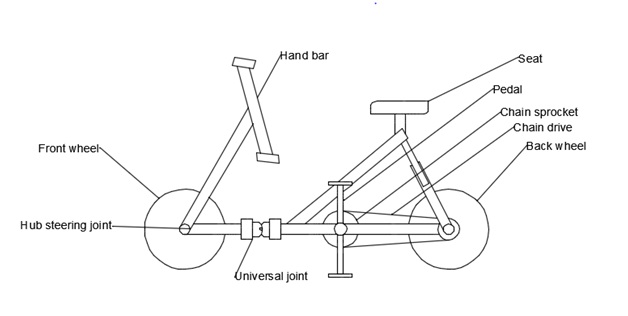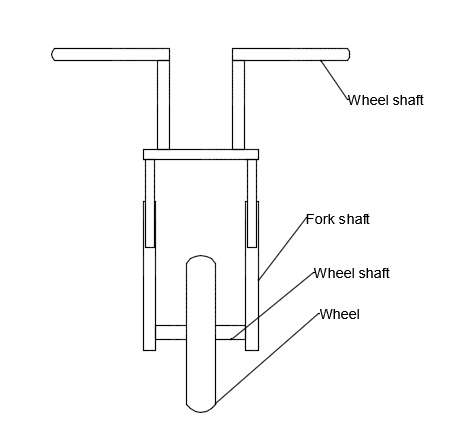





Published on Feb 28, 2025
Hub-center steering is a type of front end suspension/steering mechanisms used in bicycles. Hub center steering consists of a swing arm that extends from the bottom of the frame to the center of the front wheel instead of two forks. Hub center steering systems use an arm, or arms, on bearings to allow upward wheel deflection, meaning that there is no under braking.
Braking forces can be redirected horizontally along these arms, or fork rods, away from the vertical suspension forces, and can even be put to good use to counteract weight shift. Finally, the arms typically some form of parallelogram which maintains steering geometry over the full range of wheel travel, allowing agility and consistency of steering that forks currently cannot get close to attaining.
The present bicycles used two fork shaft front suspensions for steering and suspension. As bicycles get faster, the need for better steering control, suspension and braking becomes exponentially more important. The two most significant problems facing current front fork suspensions. Lateral wheel displacement. Difficulty in maintaining control, especially during braking and negotiating a turn.
After so many years of telescopic forks use, people are used to riding a bike and bicycle that handles in a specific way, and almost expect the limitations, and compensation is part of the experience. With the rise in popularity in motorcycles and bicycles, and the acknowledged problems of a front fork suspension, Jack Difazio saw a need for alternative steering systems. In 1968 there was a copyright made on the Difazio hub center steering concept.Difazio proposed the model for Hub center steering mechanism.
Hub center steering is characterized by a swing arm that extends from the bottom of the frame to the center of the front wheel instead of two forks. Hub center steering systems use an arm, or arms, on bearings to allow upward wheel deflection, meaning that there is no station, even under braking. Braking forces can be redirected horizontally along these arms, away from the vertical suspension forces.
Finally, the arms typically form some form of parallelogram which maintains steering geometry over the full range of wheel travel, thereby increasing the control of the rider over the bicycle. This cannot be achieved by the conventional system. Generally, a large diameter, steerable but non-rotating hub is mounted on a king-pin located within it. Another hub, of larger diameter, and forming part of the wheel, is mounted onto the first hub via large ball races. The center line of the king-pin defines the steering axis, and so the only flexure that can allow the tire to deflect away from this axis, is in the wheel and the hubs themselves


• The source of lateral displacement (relative to the steering axis) is reduced.
• Braking efficiency is increased as braking loads are spread between the bottom swing-arm and the top steering links.
• Hub-center steering separates the steering, braking, and suspension functions.
• As compared to conventional design, HCS can provide longer wheel base.
• The ride quality is improved as better suspensions can be used (mono shock absorbers).
• Eliminates the use of a steering damper/steering stabilizer.
• Useful when the conventional type of steering mechanism cannot be mounted due to the position of front wheel.
• This may be a requirement for certain bike designs (aerodynamic, electric bikes). As the system is not widely used, it may be accepted by customers looking for unconventional bike design.
• As all the sideways rigidity is provided by the king-pin, this part is quite highly loaded when the wheel is subject to a lateral force
• It is a fairly complicated system as large number of components are used.
• Cost of the system is high.